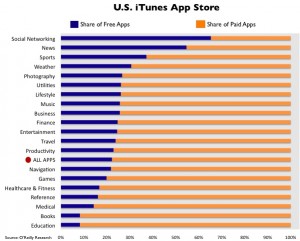Stumbled upon an article from JAMA, the leading medical journal, about YouTube. Interesting and oddly fun juxtaposition: JAMA/YouTube. The authors did a one day (February 20, 2007) search of videos at YouTube using the search terms vaccination and immunization. The goal of the research was to find out about the “quality and veracity of information” about immunization available on YouTube. In the dry, buttoned-down and passive voice of JAMA, here’s what the study concluded:
Approximately half of the videos posted were not explicitly supportive of immunization, and information in negative videos often contradicted the reference standard. The video ratings and view counts suggest the presence of a community of YouTube users critical of immunization. Clinicians therefore need to be aware of Internet video-sharing sites and should be prepared to respond to patients who obtain their health information from these sources. The potential use of these sites for effective communication by health professionals should also be considered.
In other words, a lot of people posting videos on YouTube about immunization are not complying with the medical experts’ view about the value of getting kids immunized. And, in fact, there’s a whole community of folks at YouTube who would like very much to counter that received wisdom from medical experts. The authors conclude by cautiously suggesting that perhaps health professionals take a look at the “potential use” of sites like YouTube for “effective communication” by health professionals.
I share this JAMA article for a couple of reasons. One, I think it raises some really interesting questions about the disruption of the whole notion of “expertise” in the digital era. A disruption I was reminded about when I gave one of my last lectures of the semester about “Urban Society & Health” and talked about the HIV/AIDS epidemic. A student raised his hand and shared with the class his view that the epidemic in Africa wasn’t really the result of HIV/AIDS but that the disease was used as a cover for other diseases that had existed on the continent “forever,” and that HIV/AIDS was merely a useful fund-raising mechanism. He was certain of this because, of course, he’d read it on “the Internet.” Undergraduate logic aside, the disruption of expertise in the digital era is a difficult one to know how to address. And, this disruption of expertise is particularly vexing when it comes to the areas of health, illness and medicine, in part because people’s lives are often at stake, and also because these have been such contested areas of knowledge in the historical period known as the ‘pre-Internet period.’ (For more on the political contests over medical expertise, see Paul Starr’s classic book on this, The Social Transformation of American Medicine.) The history of the Internet era is still being written and I, for one, will be fascinated to see how this battle over expertise and scientific knowledge about health, illness and medicine plays out in the digital era.
The second reason I share this JAMA article is that I am fascinated by the question: How do you sample YouTube? I’m at work on a study involving YouTube at the moment, so I’m interested in what these authors did in this piece methodologically.
If you’re a sociologist and have been trained in (or, at least had a class or two in) sociological methods, then you know that one of the guiding principles for finding a random sample is having a “universal list” or a sampling frame, from which to draw your sample. This requires knowing, or at least having a list of, all the members of a population, or the group about which you want to generalize. And this is where the difficulty comes in when a researcher confronts YouTube.
How do you sample YouTube? One of the problems is that videos come and go to YouTube, and so the given “universe” of videos available on any given day may change. What the researchers did here was to basically use two search terms (vaccination and immunization) on one single day. Then, they had outside evaluators categorize the videos as “positive” /”substantiated” (consistent with Canadian Immunization Guide standard), “negative” / “unsubstantiated” (counter to the Canadian Immunization Guide) or “ambivalent” (not clear either way). There’s a lot more information on YouTube about each video that these researchers don’t take into account, like length of time on the site, which has a very significant bearing on the traffic and the ratings.
The researchers do consider the “rating” that users had given the videos on the site, and what they found was telling but unexplored in ths piece. Among videos rated “postive,” that is consistent with medical experts’ thinking about immunization, videos that were public service announcement received the lowest mean scores. Given the authors’ conclusion that health professionals should consider the “potential use” of YouTube, this strikes me as an inherent contradiction. The research seems to suggest that the videos that get real traction on YouTube are the ones that counter the experts’ opinions and go against the prevailing wisdom.
